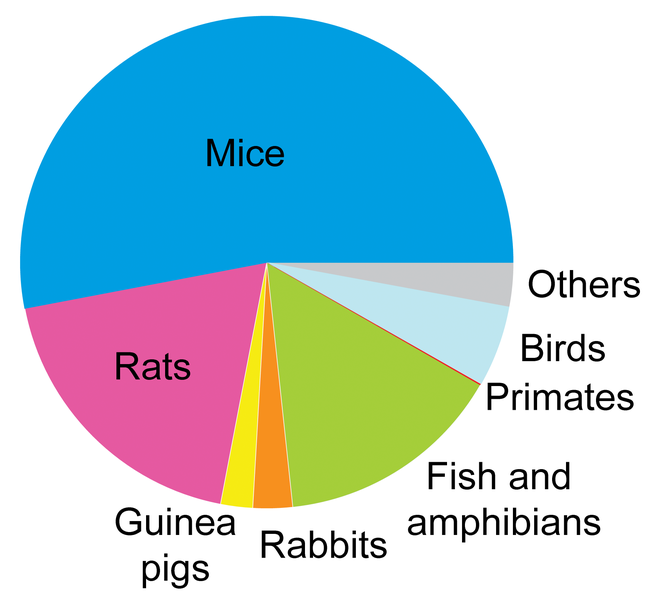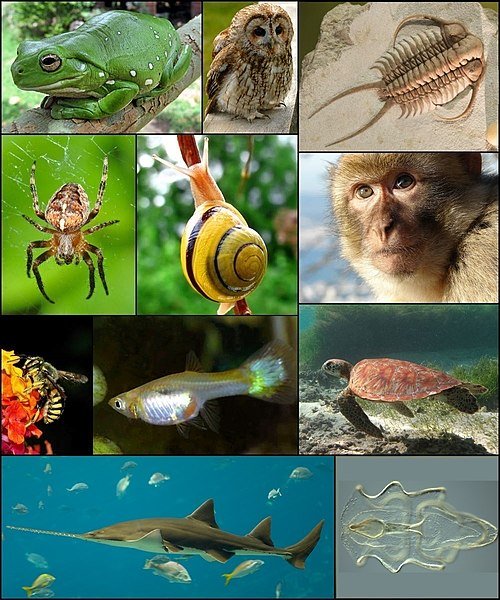Types Of Animals
The different types of animals on Earth are sorted by a system called taxonomy, which classifies animals. This system contains 6 categories of animals based on specific characteristics.
The Animal Kingdom
Animalia is the biological kingdom of animals, that contains all the animals in the world. More than 30 phyla (groups) are under the animal kingdom. There are 2 types of animals, that are 3/4 of creatures on earth. Invertebrates and vertebrates are these types.

The name of the group of vertebrates is Phylum Chordata, which contains 5 classes: reptiles, mammals, fish, birds, and amphibians. Vertebrate animals are animals, that have a backbone.
The name of the group of invertebrates is Phylum Arthropoda. Invertebrate animals are animals, that do not have a backbone.
Reptiles
It is initially thought that reptiles live only on land, but the truth is that there are some reptiles that live on land and in the water like crocodiles.
Facts about Reptiles:
- They’re covered in scutes and scales.
- They have lungs to breathe.
- Reptiles are come from 4-leg animals, or they also have 4 legs.
- Laying eggs is their way to reproduce.
- They’re ectothermic, or cold-blooded.
Example of Reptiles
Reptiles can be huge or tiny depending on their species.
- turtles
- tortoises
- snakes
- sea turtles
- lizards
- geckos
- crocodiles
Mammals
Mammalia is the class of mammals. They’re one of 5 types of vertebrates.
Facts about mammals:
- They’re warm-blooded, or endothermic.
- Approximately all mammals reproduce by getting pregnant and giving birth.
- They are not like the other vertebrates as each mammal’s jaw is hinged straight to its skull.
- Mammals, in general, have hair.
- Milk is what baby mammals get fed by their mamas.
Examples of Mammals
There are more than 5,400 living species of mammals on Earth.
- whales
- rhinoceroses
- rabbits
- humans
- hamsters
- aardvarks
- elephants
- bats
Fish
The oldest-known vertebrates are the fish. They have thousands of different species.
Facts about fish:
- They can’t live outside water; their only habitat is underwater.
- Fish breathe through gills, and most of them are covered in scales.
- They have fins.
- To regulate the temperature of their body, they rely on their surroundings as they’re cold-blooded, or ectothermic.
Examples of Fish
Fish species are more than all other groups of vertebrates combined with more than 29,950 species.
- sharks
- seahorses
- salmon
- rays
- minnows
- lampreys
- hagfish
- eels
Birds
All birds, who are warm-blooded, have wings but not all of them can.
Facts about Birds:
- Aves is the class that birds belong to.
- Feathers cover their bodies, and their bones are hollow.
- They have 2 legs, and this type is called bipedal.
- Birds can maintain their bodies’ temperature as they’re endothermic.
- They reproduce by laying eggs.
- Birds can eat whenever they want because of their digestive system. Furthermore, they do not have to think about digesting food as they can digest the food later.
- They can swallow and catch food with their beaks.
Examples of Birds
One of the most recognizable animals on Earth are birds.
- pigeons
- penguins
- parrots
- owls
- ostriches
- flamingoes
- falcons
- hummingbirds
- chickens
- albatrosses
Amphibians
This type of animals needs water or moist environments to survive.
Facts about Amphibians:
- The life cycle of most amphibians is egg-larva-adult.
- They defend using a special skin gland. Each amphibious creature has one gland at least.
- Amphibians use their thin skin to breathe, and they absorb water.
- They’re cold-blooded.
Examples of Amphibians
Amphibians, in general, can look the same animals, but they’re somehow different like a salamander and a newt.
- toads
- salamanders
- newts
- frogs
Invertebrates
Animals, who have no backbone are called invertebrates. However, only 5% of animals aren’t invertebrates. Invertebrates, that can be multicellular or made up of many work-together cells, are broken down into many different types. Furthermore, just a few characteristics are shared between the invertebrate animals.
Facts about Invertebrates:
- Their bodies are generally soft.
- Invertebrates are broken down into more than 35 groups.
- Most of them can move, but not all of them.
- Most of them have cells and tissues that work together in a compound method.
Types of Invertebrates
There’re eight groups of invertebrates who are living these days.
- Porifera – multicellular organisms having no tissues or organs and living in the water.
- Platyhelminthes – they do not have a respiratory system, and they are ribbon-like soft worms.
- Nematoda – they have worm-shaped bodies, but they are unsegmented
- Mollusca – they, in general, have a hard exoskeleton and soft bodies
- Echinodermata – they have almost a kind of spinal texture from outside
- cnidaria – they have a digestive system, but it is not complete, and have tissues
- Arthropoda – they have an exoskeleton and jointed extensions.
- Annelida – they have a primitive brain and segmented bodies
Examples of Invertebrates
There’re more than a million species of invertebrates on Earth, but most of them are insects.
| Annelida | Arthropoda | Cnidaria | Echinodermata | Mollusca | Nematoda | Platyhelminthes | Porifera |
| Earthworm | Crabs | Anemone | Sea urchins | Clams | Roundworms | Flatworms | Sponges |
| Leeches | Insects | Coral | Starfish | Snails | Tapeworms | ||
| Spiders | Jellyfish | Squid |
